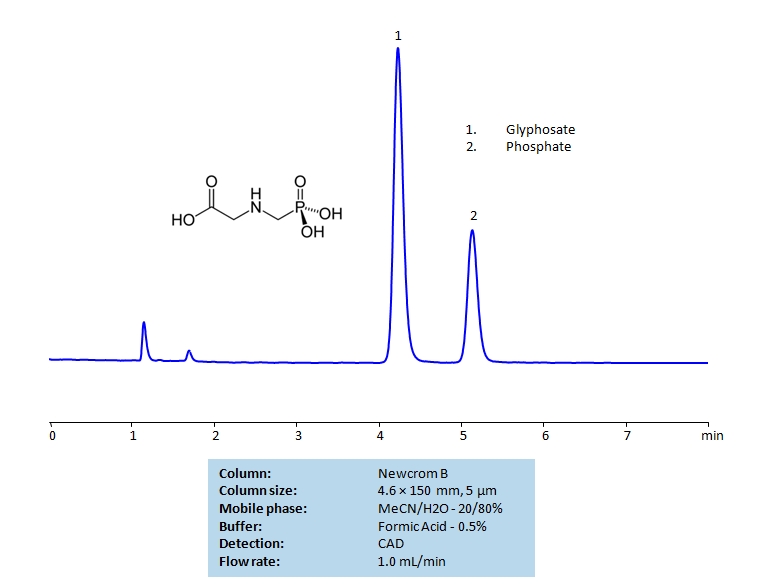HPLC Method for Glyphosate, Phosphate on Newcrom B by SIELC Technologies
High Performance Liquid Chromatography (HPLC) Method for Analysis of Glyphosate and Phosphate Ion
Glyphosate is a broad-spectrum herbicide which is used to kill weeds. The presence of glyphosate is strongly regulated by various governing agencies in the US, Europe, and Asia. Glyphosate is characterized by its carboxylic acid and phosphate group on either end.
Glyphosate and phosphate ions can be retained and separated with a Newcrom B mixed-mode column using a mobile phase consisting of acetonitrile (MeCN), water, and formic acid (H3PO4) as a buffer. This method is compatible with mass spectrometry and be detected via a Charged aerosol detector (CAD).
| Column | Newcrom B, 4.6 x 150 mm, 5 µm, 100 A, dual ended |
| Mobile Phase | MeCN – 20% |
| Buffer | Formic Acid – 0.5% |
| Flow Rate | 1.0 ml/min |
| Detection | CAD |
| Class of Compounds |
Insecticide, Herbicide, Fungicide, Hydrophobic, Ionizable |
| Analyzing Compounds | Glyphosate, Phosphate |
Application Column
Newcrom B
Column Diameter: 4.6 mm
Column Length: 150 mm
Particle Size: 5 µm
Pore Size: 100 A
Column options: dual ended
Phosphate






